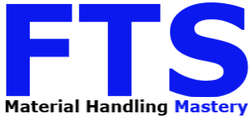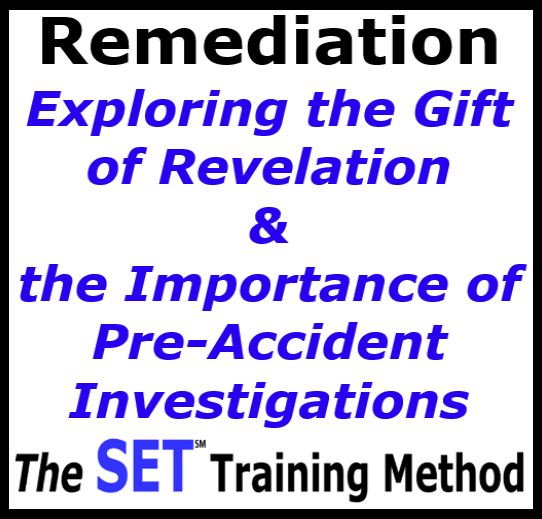“Can’t find anything wrong with what you sent, just don’t make us have to come out there.”
–OSHA in response to a procedure sent for review
The above quote is something I heard about through a company that I don’t have permission to mention. The quote however could be sent to any company, and some companies have had the experience of OSHA “coming out there”. I have heard of many OSHA visits in my travels, none of them were pleasant. The quote above was not in regard to forklift operations, but Forklift Operations are what this article is about.
OSHA’s response to the procedure is not a blow off, a threat, or a joke. What it is really saying is “know what you are doing, pay attention to what you are doing, and don’t play around”. And they are 100% correct and if you would like to NOT have them out there, then understand that not knowing what you are doing, lack of focus, and playing around are the causes of accidents. Therefore, remediation is the responsibility of instilling a foundation to build on (knowing what you are doing), reinforcing Personal Protection Awareness (Paying attention). Training/Leadership is teaching people their responsibilities. This is what keeps OSHA from “coming out there”, and there is no way around it.
If OSHA is paying you one of those “visits” then it is not because you need to remediate, but because you “didn’t” remediate. Something I try to remember to reiterate in every class is that if you are not responsible, someone will come be responsible for you. As a company with Powered Industrial Trucks, you may not see that you need to remediate because there haven’t been accidents, but if there is not constant reinforcement of the fundamentals and focus, then there is no remediation, and candidacy to become OSHA’s project continues.
Part one of the “General Duty Clause” is the proverbial “don’t make me come out there” statement of OSHA. It says that employers are responsible for eliminating known hazards that are causing or could cause serious injury or death. In my experience as a risk mitigation specialist, most of those hazards will be habits. And since most of the hazards are habits, most of the remediation is leadership and training. It sounds like a scare tactic, but if your company becomes a project of OSHA, you will wish someone told you ahead of time: and you will find out just how honest this article really is.
What the General Duty Clause is really saying is that as an organization, you need to be intentionally finding hazards and eliminating them. If you are not “compliant” you are begging for a special occasion visit from the agency, but more importantly, you are opening the organization up for a forklift accident. A forklift accident from a Powered Industrial Truck will make you wish you had a visit from OSHA because of the aftereffects it will have on insurance rates etc., combined with the spotlight on the organization by federal law enforcement. Again, irresponsibility brings more oversight.
Remediating before you are forced to requires more than just making a decision. Engaging in this process before being made to by an outside authority is probably harder for the simple fact that you don’t think you have to. The human brain wants to take the easiest path, and like Dr. Daniel Amen said, “the brain does not do what is good for it, it does what it has done.” That is proof that the reason operators and pedestrians make the mistakes they make is the same reason there isn’t an effective Forklift Training program.
![]()
The human brain also teaches itself to dwindle focus and alertness. It’s called “getting comfortable” or “Normalcy” and is the reason that OSHA mandates proper training every 3 years for operators. However, to properly remediate an operation, leaders must be developed to initiate and perpetuate a SET program. A SET program leads, trains, and manages in a way that everyone in the operation becomes a hazard eliminator, which at the core is merely doing things right.
Vision is also an essential part of remediation, or “compliance”. Not having a vision for a forklift program is like navigating a ship through a channel in heavy fog with no electronic navigational aids. In other words, it’s like being blind. A vision is seeing the difference between where you are and where you need to be headed. “Headed” is important because you never get there, but in the process of development, you get to where you need to be. It is also important to understand, intimately, where you are the same way you understand you need a ladder for accessing the roof. That may be a bit of an oversimplification, but having a forklift training program without an understanding as in depth as when you need a ladder is worse than not having a program at all. Think of climbing the roof from the back of a truck and using buckets to stand. That would be worse than not climbing at all. The proverbial end result for both getting on the roof and forklift training with no foundation is the same, and that is tragedy.
![]()
A properly developed organization is one that does professional pre-accident investigations. Having the capacity to professionally conduct a pre-accident investigation is being intimately aware of what habits cause accidents, and which ones prevent them. They must be competent in this and able to teach it. OSHA does vaguely stipulate who this needs to be, however, it should be managers and supervisors to start with. This is to say that before taking on the title of supervisor and/or manager in a material handling operation, providing a proper assessment should be a minimum required skill.
BTW, a forklift training & safety program without professional assessment (within the organization) & a Vision will invariably fail because of the same reason climbing from buckets will fall cause one to fall. A weak foundation is an unstable one and that is what will be taught while the operation hobbles around in perpetual violation looking more productive. Which takes us back to “normality” or “comfort”. Comfort kills, and everything rises & falls on leadership.
Hopefully, this article was enlightening and helpful and if it was, please share, like, & comment.






